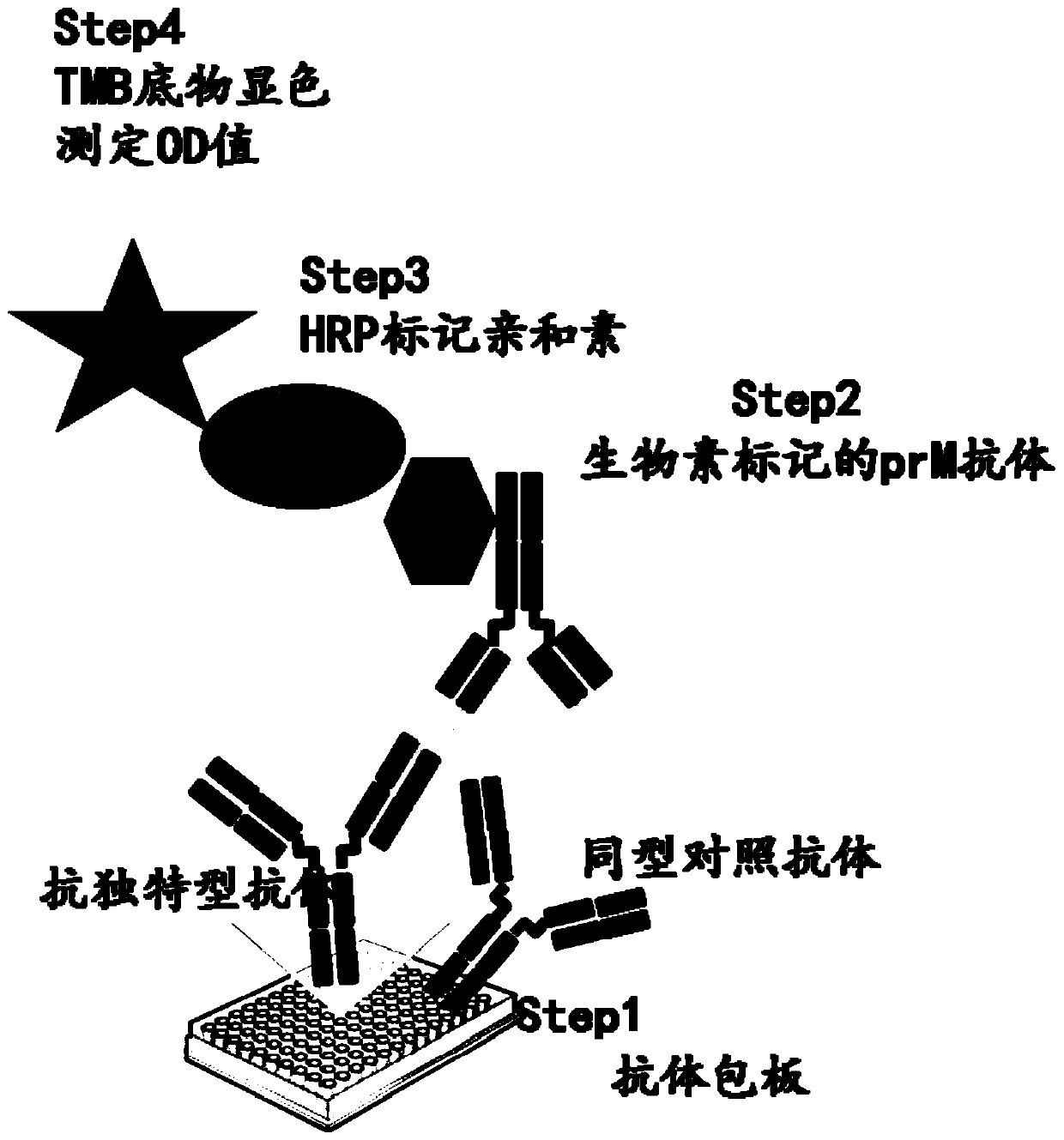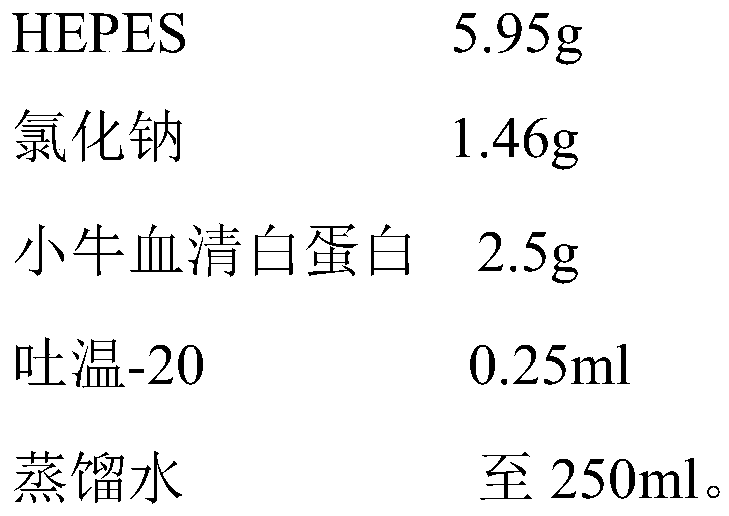Anti-idiotypic antibody detection method
An anti-idiotypic antibody and detection method technology, applied in the biological field, can solve the problems of easy false positives and low detection sensitivity of anti-idiotypic antibodies, and achieve the advantages of eliminating the need for enzyme-labeled secondary antibodies, sensitive reactions, and eliminating false positives Effect
- Summary
- Abstract
- Description
- Claims
- Application Information
AI Technical Summary
Problems solved by technology
Method used
Image
Examples
Embodiment 1
[0053] 1. Coated titer plate
[0054] Add 1 mg / mL anti-idiotypic antibody sample to coating buffer at a ratio of 1:1000, dilute it to EP tube; immediately add 100 μL / well to the microtiter plate, and incubate at 4°C overnight or at room temperature for 2 hours. Negative control: the isotype control antibody is also diluted with coating buffer, and added to the microtiter plate at 0.1ug / well.
[0055] 2. closed
[0056] Pour off the coating buffer in the ELISA plate, add 150 μL of blocking solution to each well, block at room temperature for 1 hour, and wash 4 times with PBST.
[0057] 3. Detection of antibodies
[0058] Dilute the biotin-labeled prM monoclonal antibody (biotin-prM) with sample diluent so that the concentration is 1 μg / ml, add 0.1 ml to each well, and incubate the plate at room temperature for 60 min, or at 37 °C for 30 min. Then wash 4 times with PBST.
[0059] 4. Streptavidin-HRP
[0060] Streptavidin-HRP (Streptavidin-HRP) was diluted by adding sample d...
Embodiment 2
[0066] 1. Coated titer plate
[0067] Add 1 mg / mL anti-idiotypic antibody sample with coating buffer at a ratio of 1:10000, dilute it into EP tube; immediately add 100 μL / well to the microtiter plate, and incubate at 4°C overnight or at room temperature for 2 hours. Negative control: the isotype control antibody is also diluted with coating buffer, and added to the microtiter plate at 0.1ug / well.
[0068] 2. closed
[0069] Pour off the coating buffer in the ELISA plate, add 150 μL of blocking solution to each well, block at room temperature for 1 hour, and wash 4 times with PBST.
[0070] 3. Detection of antibodies
[0071] Dilute the biotin-labeled prM monoclonal antibody (biotin-prM) with sample diluent so that the concentration is 1 μg / ml, add 0.1 ml to each well, and incubate the plate at room temperature for 60 min, or at 37 °C for 30 min. Then wash 4 times with PBST.
[0072] 4. Streptavidin-HRP
[0073] Streptavidin-HRP (Streptavidin-HRP) was diluted by adding sam...
PUM
| Property | Measurement | Unit |
|---|---|---|
| concentration | aaaaa | aaaaa |
Abstract
Description
Claims
Application Information
 Login to View More
Login to View More - R&D
- Intellectual Property
- Life Sciences
- Materials
- Tech Scout
- Unparalleled Data Quality
- Higher Quality Content
- 60% Fewer Hallucinations
Browse by: Latest US Patents, China's latest patents, Technical Efficacy Thesaurus, Application Domain, Technology Topic, Popular Technical Reports.
© 2025 PatSnap. All rights reserved.Legal|Privacy policy|Modern Slavery Act Transparency Statement|Sitemap|About US| Contact US: help@patsnap.com



